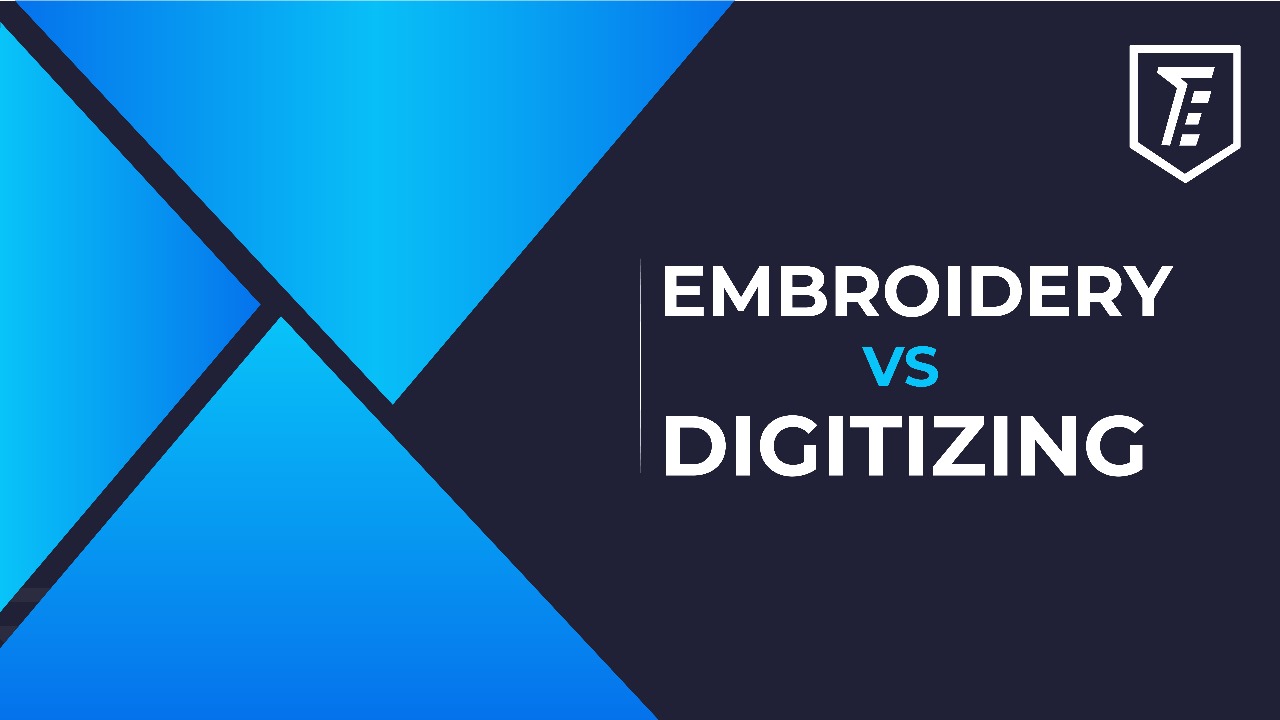

Embroidery and Digitizing are relatively close to each other but also carry various differences altogether. Both have progressed notably over the time. Embroidery and Digitizing are the two fundamentals of the textile industry, which offers a bunch of creative ways to make more attractive fabrics with detailed designs. However, the techniques, procedures, and tools in embroidery and digitizing vary from each other. In this blog, we will distinguish between embroidery and digitizing by sorting out their main and specific features and characteristics and the impact they are absorbing from modern technologies over time.
Embroidery is the craft of stitching designs onto fabric by hand or with a machine, while digitizing is the process of converting a design or image into a digital file that can be read by embroidery machines for automated stitching.
Embroidery is a vintage crafting industry that involves the furnishing of fabrics or other materials along with needles and thread. Embroidery has a rich historical background as it was practiced by various cultural civilians in the world. The principal characteristics of the term include :
Read More: How to Convert Image to Vector Illustrator
Digitizing, also known as technological advancements, replicates the process of converting digital artwork or designs in such a way that embroidery machinery understands and works on it. This process revolutionized the world of handcrafted embroidery and filled the gaps between physical embroidery and digital design.
Digitizing undergoes a variety of advantages for the embroidering industry across the globe.
Moving forward, we will analyze some comparisons between embroidery and digitizing via multiple points of view.
Read More: Free Embroidery Digitizer Software
Embroidery digitizing service can save up the cost of excessive labor but requires initial investments in machinery and software development.
Manual embroidery is cost-effective due to the cost of labor and the consumption of time.
Read More: How to Use Regular Craft Foam for Puff Embroidery
In conclusion, embroidery and digitizing have their own specific uniqueness in their era. They occupy their own set of strengths as well as technical advancements. Hand embroidery has its worth for its artisan quality. As still a lot of people believe and consider handicrafts more than digitizing as, according to them, it would bring more elegance and efficiency to the world of the textile industry.
On the other hand, Digitizing has been preferred by the modern group or culture whose demands are more likely of precisions and efficient designs along with perfections in the scalings.
Lastly, both embroidery and digitizing contribute to a rich weaving industry of textile designs, which ensures that creativity has no boundaries, especially in such a competing modern world.